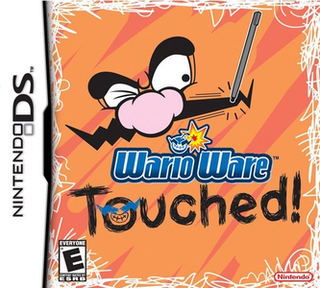
WarioWare: Touched! is a minigame compilation party video game released by Nintendo for the Nintendo DS. The fourth installment of the WarioWare series, and the first of three on the Nintendo DS, the game involves rapidly completing "microgames" — simple minigames lasting extremely short periods of time — as quickly as possible. The microgames are exclusively controlled with the Nintendo DS's touchscreen and microphone.
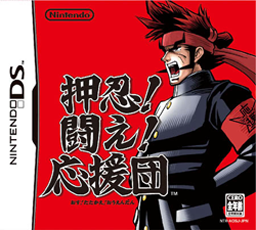
Osu! Tatakae! Ouendan, or Ouendan, is a rhythm video game developed by iNiS and published by Nintendo for the Nintendo DS handheld game console in 2005, for release only in Japan. Ouendan stars a cheer squad rhythmically cheering for various troubled people, presented in-game in the style of a manga comic. In each stage, players use the DS touchscreen to tap specifically marked spots that appear in rhythm to various Japanese pop songs, scoring points for accurate timing and avoiding a poor performance which can cause the stage to end prematurely. Though never released in Western markets, it was a popular import to these regions, leading to the development of the Westernized spiritual sequel Elite Beat Agents, as well as a direct Japanese sequel Moero! Nekketsu Rhythm Damashii Osu! Tatakae! Ouendan 2.

Tetris DS is a puzzle video game developed and published by Nintendo. It was released for the Nintendo DS on March 20, 2006, in North America, April 13, 2006, in Australia, April 21, 2006, in Europe, and April 27, 2006, in Japan. An installment of the Tetris franchise, the game supports up to ten players locally, and supported online multiplayer of up to four players using Nintendo Wi-Fi Connection prior to its discontinuation.
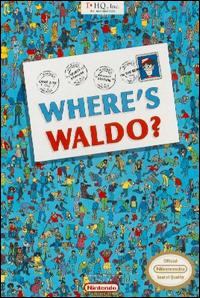
Where's Waldo? is a hidden object game developed by Bethesda Softworks and published by THQ for the Nintendo Entertainment System in 1991. It was the first video game loosely based on Martin Handford's 1987 book of the same name. Mostly similar to the books, players must help Waldo get to the Moon by finding him in each of the eight levels in the game.

Cars is a 2006 adventure racing game published by THQ. The game is based on the 2006 film of the same name. It was released for the PlayStation 2, GameCube, Xbox, Microsoft Windows, Game Boy Advance, Nintendo DS, and PlayStation Portable in June 2006, with versions for the Xbox 360 and Wii released later that year. The Wii version includes functionality geared towards its Wii Remote controller and was a launch game for the system. Taking place after the events of the film, the game follows Lightning McQueen as he participates in the new racing season with his goal set on finally winning the Piston Cup. While doing so, he races and trains with the local community of Radiator Springs.
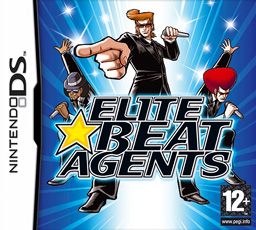
Elite Beat Agents is a rhythm video game developed by iNiS and published by Nintendo for the Nintendo DS. It was released in North America, Europe and South Korea. As the second of three rhythm games developed by iNiS specifically for the DS, it is the spiritual sequel and international counterpart to Osu! Tatakae! Ouendan, a Japanese rhythm game released in 2005, sharing many common elements with it.

Rhythm Tengoku is a rhythm game developed and published by Nintendo for the Game Boy Advance. It was originally released on August 3, 2006, and was the last game released by Nintendo for the Game Boy Advance. An arcade version of the game was reprogrammed and published by Sega on September 20, 2007. Both versions were released in Japan exclusively. The game was the first in the Rhythm Heaven series which spawned three international sequels; Rhythm Heaven, Rhythm Heaven Fever, and Rhythm Heaven Megamix. It began as an idea created by its composer and supervisor Tsunku, who proposed it to Nintendo due to his belief that they could do a better job with it than he could.

The Lost World: Jurassic Park is the title of several different video games released for handheld video game consoles in 1997. Four versions, each with their own gameplay variations, were developed and published by various companies for the Sega Game Gear, Nintendo's Game Boy, and Tiger Electronics' game.com and R-Zone consoles. Each version is based on the 1997 film of the same name.
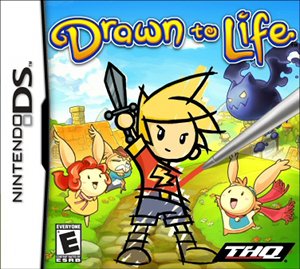
Drawn to Life is an action-adventure platform video game for the Nintendo DS developed by 5th Cell and published by THQ in 2007. It was later published by Agatsuma Entertainment in Japan in 2008 under the name Drawn to Life: God's Marionette, and in Korea under the title Geuryeora, Touch! Naega Mandeuneun Sesang. In the game, the player creates their own playable characters, level objects, and accessories by drawing them using the DS's stylus and touchscreen. The game was ported to iOS by WayForward and released by 505 Games on May 21, 2014.
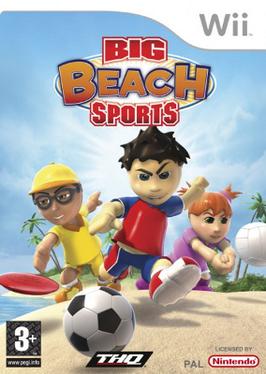
Big Beach Sports is a sports game for the Wii developed by HB Studios and produced by THQ. The game is a collection of six beach sports simulations, in which players compete on a beach resort location. The sports include: American football, volleyball, soccer, bocce, cricket and disc golf. The games are not highly realistic simulations of the sports, but more orientated towards unrealistic physics, stylized beach scenarios, and a simplified rule set. It is most notable for being the third Wii game to feature connectivity to the Nintendo DS. Big Beach Sports also features the first cricket game on the Wii. It was released on 24 June 2008.
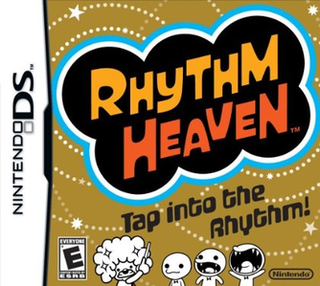
Rhythm Heaven, known as Rhythm Tengoku Gold in Japan, Rhythm Paradise in Europe, and Rhythm World in Korea, is a rhythm video game developed and published by Nintendo for the Nintendo DS. It is the second game in the Rhythm Heaven series and the first one released worldwide, following the Japan-only Game Boy Advance title Rhythm Tengoku, and was succeeded by Rhythm Heaven Fever for the Wii and Rhythm Heaven Megamix for the Nintendo 3DS. The game was released in Japan on July 31, 2008, in North America on April 5, 2009, in Europe on May 1, 2009, and in Australia on June 4, 2009.

Neighbours From Hell 2: On Vacation, known in the United States as Neighbors from Hell: On Vacation, is a comedy puzzle strategy video game developed and published by JoWooD for Microsoft Windows, Android and iOS. It is the sequel to Neighbours from Hell. It was released for Windows on February 20, 2004 in Europe and March 28, 2006 in the United States.

WALL-E is a platform video game developed by Heavy Iron Studios and published by THQ, based on the 2008 film of the same name.

Universomo Ltd. was a Finnish video game developer based in Tampere, Finland, founded in 2002, and acquired by THQ on May 9, 2007. Universomo also had offices in Helsinki, Finland and San Diego, United States. The studio focused on games for mobile phones, the iPhone and the N-Gage. On January 12, 2010, THQ announced the Nintendo DS title Beat City, developed by Universomo, marking the developer's first entry to the handheld gaming market.
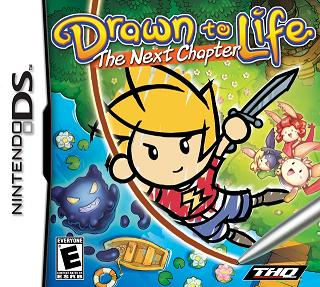
Drawn to Life: The Next Chapter is a 2D platform video game developed by 5th Cell and published by THQ for the Nintendo DS, released in October 2009 in all regions except Japan. It is a sequel to the original Drawn to Life and a counterpart to the Wii version, although it has a different plot. One of the game's major features is the player's ability to draw elements of the game, and the game has a heavy emphasis on doing so.
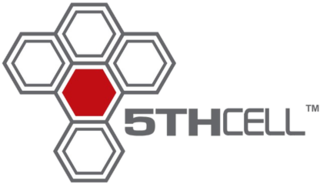
5th Cell is an independently owned American video game developer founded in 2003 as 5th Cell Media, LLC. led by Jeremiah Slaczka and Marius Falhbusch. The company is most well known for creating the Drawn to Life and Scribblenauts series.

Marvel Super Hero Squad is a video game developed by Blue Tongue Entertainment, Mass Media, and Halfbrick and published by THQ. It was released in October 2009 for the Nintendo DS, PlayStation 2, PlayStation Portable, and Wii. The game features cartoonish super-deformed versions of the Marvel Comics superhero characters, as seen in the Marvel Super Hero Squad toy line by Hasbro, as well as the television show made by Film Roman and Marvel Animation for Cartoon Network.

Rhythm Heaven Fever, known in both the PAL regions as Beat the Beat: Rhythm Paradise, Minna No Rhythm Tengoku in Japan and Rhythm World Wii in Korea, is a music video game developed by Nintendo and TNX for Nintendo's Wii. It is the third game in the Rhythm Heaven series, following Rhythm Tengoku for the Game Boy Advance and Rhythm Heaven for the Nintendo DS, and was succeeded by Rhythm Heaven Megamix for the Nintendo 3DS in 2016. The game was released in Japan on July 21, 2011, in North America on February 13, 2012, in Europe on July 6, 2012, and in Australia on September 13, 2012. It was digitally re-released for the Wii U in Japan on July 27, 2016, in North America on November 10, 2016, and in Europe on November 22, 2016.

Rhythm Heaven Megamix, known in Europe and Australia as Rhythm Paradise Megamix, and in Japan as Rhythm Tengoku: The Best Plus and Rhythm World: The Best Plus in Korea, is a rhythm game developed and published by Nintendo for the Nintendo 3DS. It is the fourth game in Nintendo's Rhythm Heaven series and compiles stages from the series' previous entries; Rhythm Tengoku, Rhythm Heaven, and Rhythm Heaven Fever, as well as adding new ones. The game was released in Japan in June 2015 and in North America, Europe, Oceania, and South Korea throughout 2016.
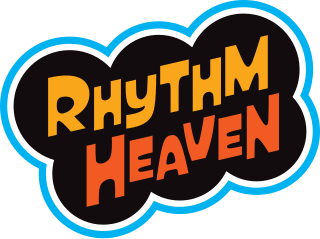
Rhythm Heaven, known as Rhythm Tengoku in Japan, Rhythm Paradise in PAL regions, and Rhythm World in Korea is a rhythm video game series developed and published by Nintendo. In the games, players play through a collection of rhythm mini-games, each with its own set of rules. The series is mainly released on Nintendo consoles, including the Game Boy Advance, Nintendo DS, Nintendo 3DS, and the Nintendo Wii. The original game, Rhythm Tengoku, was also released in arcades on the SEGA NAOMI arcade cabinet. The music is mostly composed by Japanese singer Tsunku.




















